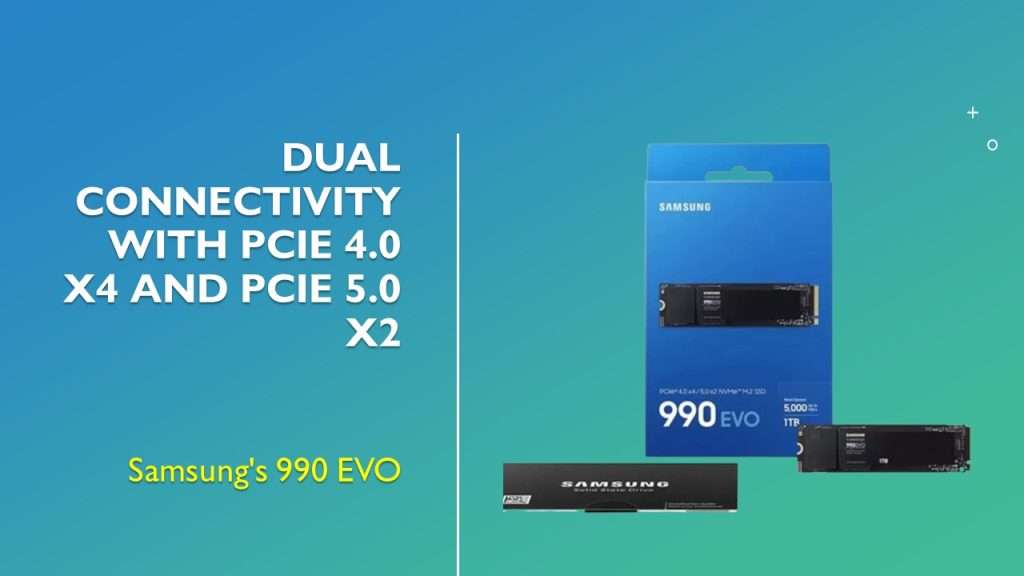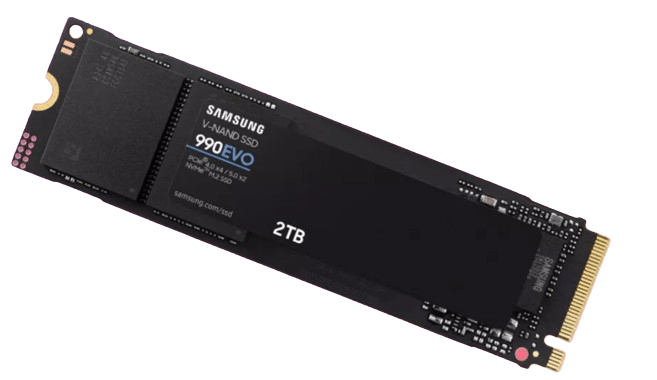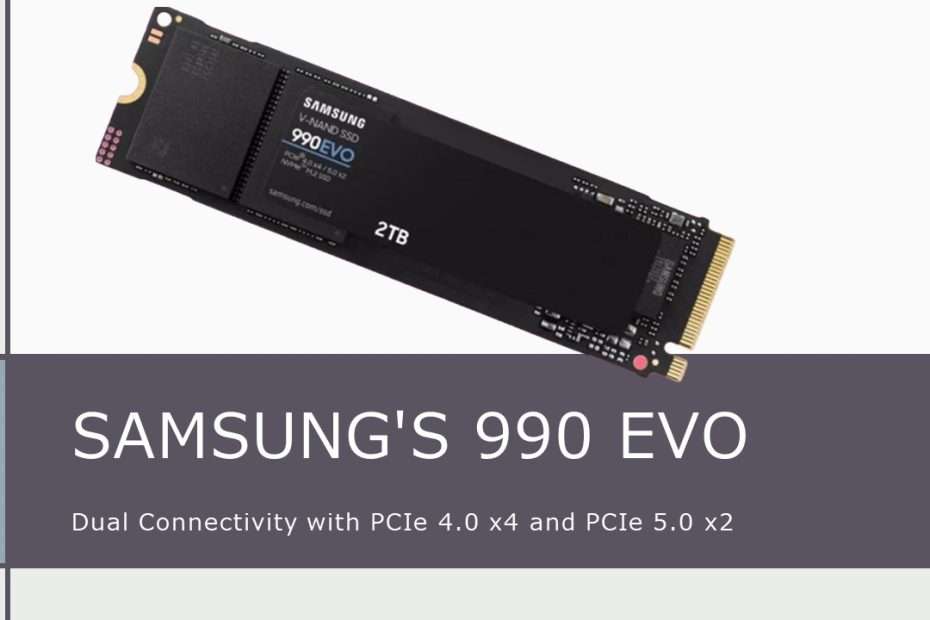Samsung has recently unveiled the 990 EVO, marking the company’s long-awaited entry into the mid-range consumer SSD market. This release follows a hiatus of almost five years since their last mid-range consumer SSD launch. Interestingly, details about the SSD were prematurely disclosed by Samsung Ukraine a couple of weeks prior to the official announcement, providing enthusiasts with a sneak peek into some of its key specifications.
The 990 EVO introduces a significant upgrade for mainstream consumers, offering enhanced performance and features compared to its predecessors. This move by Samsung demonstrates a strategic response to the evolving demands of the consumer SSD market. Notably, the company’s decision to re-enter the mid-range segment suggests a renewed focus on catering to a broader audience with a product that combines reliability, speed, and the latest technological advancements.

Samsung’s latest SSD, the 990 EVO, boasts impressive performance improvements over its predecessor, the 970 EVO Plus. With sequential read speeds of up to 5,000MB/s and sequential write speeds of 4,200MB/s, the 990 EVO achieves a notable 43 percent increase in speed. Not stopping there, the random read speed reaches 700,000 IOPS, and the random write speed peaks at an impressive 800,000 IOPS. These enhancements position the 990 EVO as a powerful option for users seeking top-tier speed and responsiveness in their storage solutions.
The speeds showcased by the 990 EVO, while commendable, do not position it as the absolute fastest SSD in Samsung’s lineup. Samsung’s portfolio includes even more high-performance options, such as the 990 Pro. This premium SSD takes speed to the next level, featuring impressive sequential read speeds of up to 7,450MB/s and sequential write speeds of up to 6,900MB/s. These exceptional speeds make the 990 Pro a powerhouse, ideal for users who require top-of-the-line performance for demanding tasks like 3D rendering, video editing, or other data-intensive applications.
In the realm of SSD technology, the diversity in Samsung’s offerings allows users to choose a storage solution tailored to their specific needs. While the 990 EVO provides a substantial boost in performance for mainstream users, those with even higher demands can turn to the 990 Pro for unparalleled speed and responsiveness. Samsung’s varied SSD lineup ensures that there is a suitable option for every user, from casual consumers to professionals with the most demanding workloads.
The 990 EVO, while not boasting the highest performance figures, distinguishes itself with a forward-looking feature. It supports both PCIe 4.0 x4 and PCIe 5.0 x2 connectivity, positioning itself as a potentially future-proof solution. This dual-connectivity capability allows users to adapt the SSD to different systems and motherboard configurations, offering flexibility and compatibility. However, it’s worth noting that the presence of only two PCIe 5.0 lanes might limit the incentive to utilize the PCIe 5.0 x4 slot fully. Users need to weigh the benefits of higher-speed connectivity against the potential trade-off of using up valuable lanes in their system architecture.
While the 990 EVO’s dual-connectivity feature provides a degree of versatility, users must carefully consider their specific hardware setup to optimize its usage. This nuanced approach ensures that the SSD’s capabilities align with the overall system configuration, allowing users to make the most informed choices based on their performance and connectivity requirements. The 990 EVO’s adaptability underscores the importance of considering not just current needs but also future-proofing considerations when selecting storage solutions for evolving computing environments.
Samsung positions the 990 EVO as an attractive choice for users looking to upgrade from older SSDs, emphasizing its ability to deliver “significantly faster loading speeds for games and swift access to large files“. The marketing strategy focuses on the tangible benefits users can expect, particularly in terms of improved performance and responsiveness. This appeal to the gaming and multimedia community suggests that the 990 EVO is designed to cater to the needs of users engaged in activities that demand high-speed data access, promising an enhanced overall experience for those upgrading their storage solutions.
In addition to its performance upgrades, Samsung highlights the 990 EVO’s significant improvement in power efficiency compared to its predecessor, the 970 EVO Plus. The claim of using up to 70 percent less power underscores the company’s commitment to sustainability and addresses the practical concern of battery life for laptop users. This enhanced power efficiency not only aligns with the growing emphasis on eco-friendly technology but also extends the device’s usability on a single charge.

Samsung has introduced the 990 EVO in 1TB and 2TB capacities, catering to users with varying storage needs. Priced at $124.99 and $209.99, respectively, these models aim to strike a balance between affordability and performance. The 1TB variant comes with a five-year limited warranty or a Total Bytes Written (TBW) threshold of 600TB, whichever occurs first. On the other hand, the 2TB model offers a similar five-year warranty but doubles the TBW to 1200TB. This pricing and warranty structure allows users to choose the capacity that aligns with their storage requirements while providing assurance through Samsung’s warranty coverage.
For interested consumers, the 990 EVO is readily available for purchase on a global scale. The accessibility of these SSDs underscores Samsung’s commitment to ensuring that users worldwide can take advantage of the enhanced performance and features offered by the 990 EVO. The availability of different capacities, along with the specified warranty terms, adds flexibility for users to make informed choices based on their storage needs and budget considerations. As a result, the 990 EVO seeks to be a versatile and widely accessible solution in the competitive landscape of consumer SSDs.
Maybe you liked other interesting articles?

